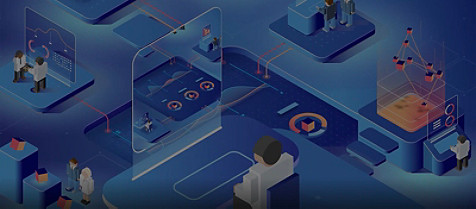What is data analytics?
Data analytics is the process of collecting and analyzing lots of customer data to draw conclusions about behavior patterns, personal interests and purchasing trends. Analytics accelerate decision-making, improve business processes, enhance user engagement, reduce costs, and drive growth and profitability. Data analytics spans the analytics landscape, from the most basic descriptive and diagnostic analytics to advanced analytics like predictive, prescriptive and data sciences.
What are the business benefits of data analytics?
Data analytics can provide new revenue opportunities, better customer service, more effective marketing, improved operational efficiency and real competitive advantages. It can also help businesses:
- Anticipate the needs of their customers, optimize customer experiences (CX) and deliver hyper-personalized services.
- Mitigate fraud and risk in business operations.
- Inform decision-makers on the direction to take products and services to best meet the future needs of their customers.
- Pinpoint areas of the business that need improvement, so that tool or process changes can be made to address those issues.
How can an organization move to the next level, to become a high-performing data analytics machine?
It takes a combination of these components:
- Intent. To become an analytics-driven organization, a cultural shift is required. The CEO and other C-level managers must describe how to make an analytics culture part of the organization’s DNA, to ensure that everything is aligned, including the business’s vision, changing trends, internal services and processes.
- Data. Organizations must have a strategic plan to collect all relevant data that can drive business outcomes. They need to define comprehensive data policy covering critical data sources, means of data capture, data storage and management architecture.
- Tools. Tools and technology are advancing rapidly, enabling the application of analytics across business challenges in order to grow exponentially. These technologies facilitate advanced analytics methods and techniques, such as clustering, predictive modeling, statistical modeling and algorithms to gain deeper insights. Enterprises should conduct intelligent and careful evaluations to select the proper “fit for purpose” tools and technologies to meet their business needs
- People. To be a successful analytics-driven organization, the right people are essential. The right team is required to convert data into value by using matrices, algorithms, models, optimization and functions. And it is essential to ensure team balance, to allow a 360-degree feedback on data. The ideal team should include business analysts, data scientists and technical specialists.
- Ability. There is no one-size-fits-all solution. As trends emerge and novel technologies move mainstream, organizations need to be flexible and adapt to changing advancements and ways to derive meaning from data.
- Innovation and investment. An investment in people and their skills will help build a workforce that can think differently and innovate, placing the organization on the fast track to success.
What are some guidelines for building out an advanced data analytics capability?
Here are five things to keep in mind…
- Data modernization isn’t just about technology. In addition to smart tech strategies, data modernization requires a full-scale corporate shift that’s already underway. It’s a dramatic ascendance for data and one that ripples through every business function.
- Create a structured process. Modernization begins with business value. Create a value chain map that clearly identifies opportunities that result in outcomes that impact the top and bottom lines. What’s the associated data that will help generate those outcomes? Prioritize the potential areas where data can elevate business processes, whether it’s increasing sales or reducing risk.
- Build based on what you’re monetizing. If your organization is focused on improving business processes and driving efficiencies, then creating a data lake should be at the top of your IT to-do list. If your focus is CX and you’re creating features and experiences associated with your product, the focus should be on cloud and scale.
- Make data accessible. Modernizing data is essential for realizing the promise of AI. If historical data isn’t stored in an accessible way, AI and machine learning efforts are doomed to fail. Relevant questions include: How easy is it for data scientists to access all kinds of data that exists within the organization? How readily are they able to experiment and fail fast?
- Get the skill sets right. Data modernization requires a SWAT team—people with business expertise partnering with full-stack developers and others who understand the required sources of data. And given the multiplicity of devices, it’s vital to incorporate a design-thinking process to make data more accessible and meaningful.



















